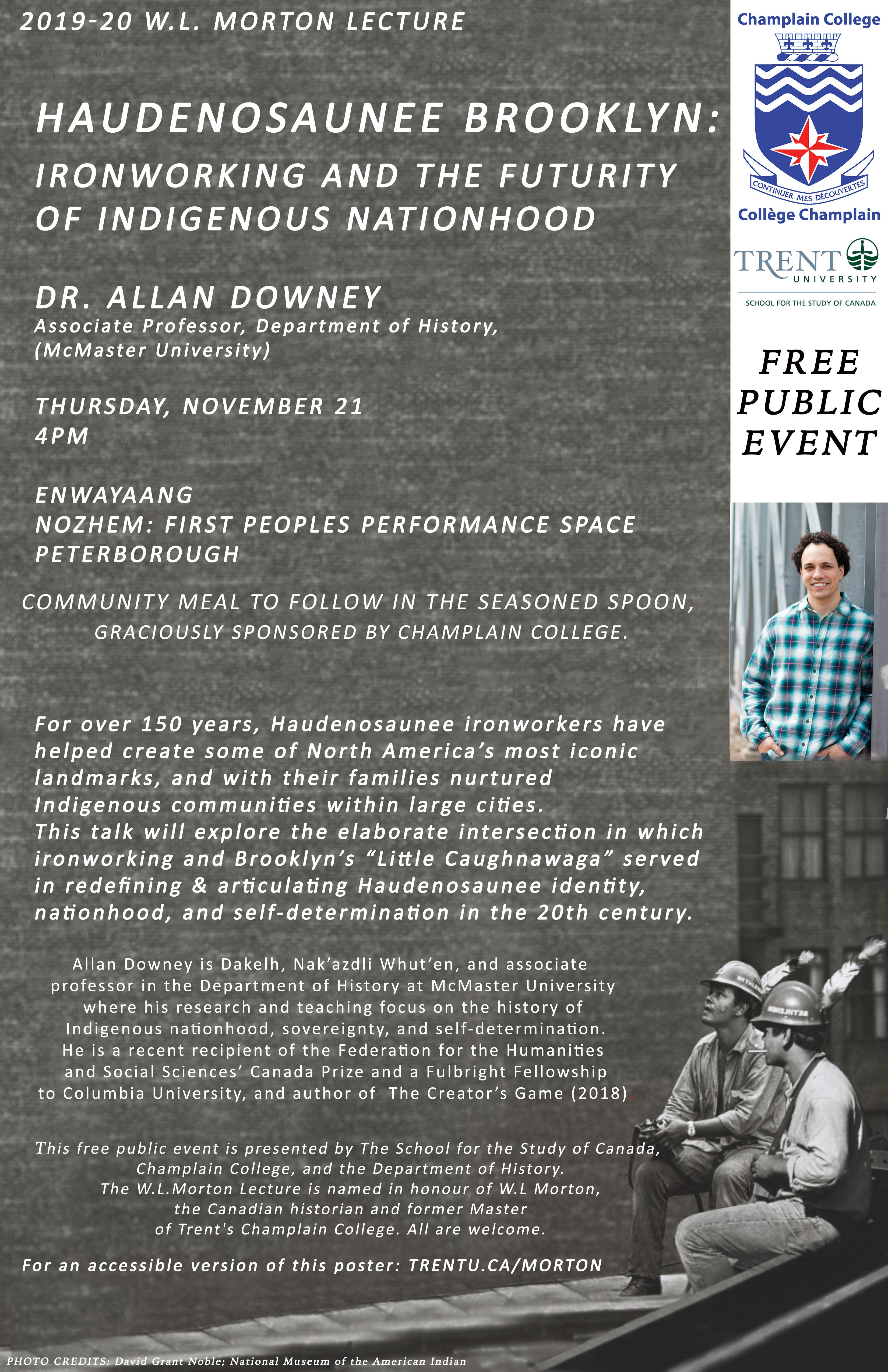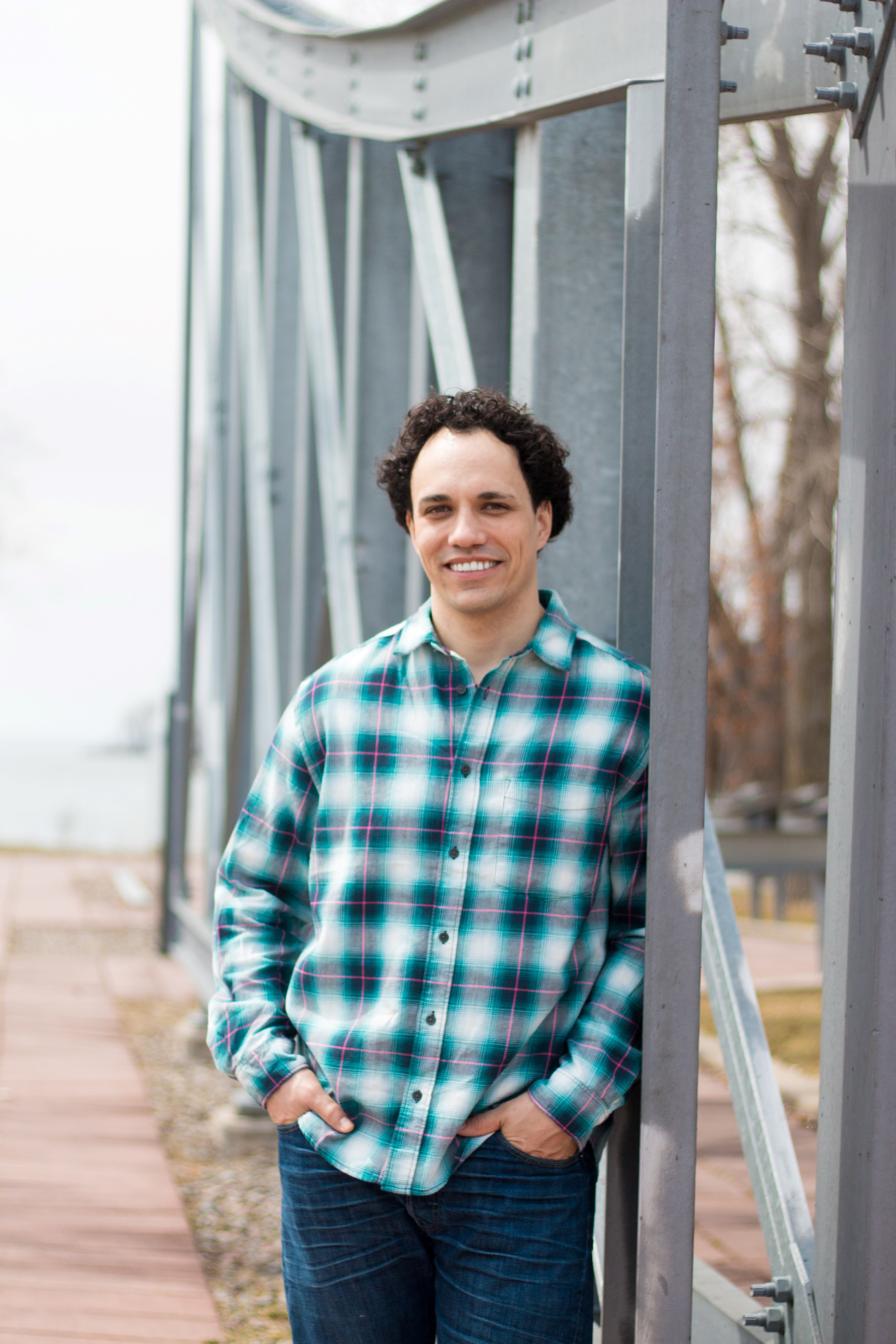Dr. Allan Downey


Dr. Allan Downey
Nak'azdli Whut’en First Nation
Associate Professor, Department of History, McMaster University
Haudenosaunee Brooklyn:
Ironworking and the Futurity of Indigenous Nationhood
Thursday Nov 21, 2019
4:00pm - 5:30pm
Enwayaang -- Nozhem: First Peoples Performance Space
Free Event everyone welcome
Community Meal to follow in the Seasoned Spoon, Champlain College, graciously sponsored by Champlain College.
On May 10th, 2013, the crowning spire of the One World Trade Center in Manhattan, New York was set in place marking the completion of the first of six towers planned as replacements for those destroyed on September 11th, 2001. Atop that tower stood the latest generation of Haudenosaunee ironworkers to follow in the footsteps of Indigenous families who, for the last 150 years, have helped create some of North America’s most iconic landmarks. Beginning in the 1880s, the industry quickly became a principal source of employment for Haudenosaunee men who traveled to jobs throughout Canada and the northeastern United States. In New York City specifically, ironworking ensured a steady stream of stable employment that encouraged families to relocate to the city. By the 1920s Haudenosaunee families from Ahkwesáhsne and Kahnawà:ke began relocating to Brooklyn where they opened a string of boarding houses and established the new community of “Little Caughnawaga.” Significantly, in the 1920s and onward, Haudenosaunee women played an integral role in the formation of this community as they acted as critical intermediaries operating boarding houses, working in factories, assisting transient Indigenous workers from across North America, and extending the web of Haudenosaunee nationhood in these urban spaces. Together, ironworking and “Little Caughnawaga” became a nexus between Haudenosaunee nationhood, family life, labour activism, and self-determination. This is particularly significant when we begin to consider, as Chris Andersen and Coll Thrush remind us, that Indigenous peoples were conceptually and physically removed from urban spaces which were reframed as “modern” and juxtaposed to perceptions of “Indian authenticity.” And yet, Haudenosaunee citizens were at the centre of building these sites of “modernity” while reformulating their own articulations of Haudenosaunee identity and nationhood. Employing historical methodologies inspired by the field of Indigenous Studies, this presentation intends to demonstrate the elaborate intersection in which ironworking and “Little Caughnawaga” served in redefining and articulating Haudenosaunee identity, nationhood, and self-determination in the twentieth century.
This free public event is presented by The School for the Study of Canada, Champlain College, and the Department of History. The W.L. Morton Lecture is named in honour of W.L. Morton, the Canadian historian and former Master of Trent's Champlain College. All are welcome.
For more information please contact canadianstudies@trentu.ca
Allan Downey is Dakelh, Nak’azdli Whut’en, and an Associate Professor in the Department of History at McMaster University where his research and teaching focus on the history of Indigenous nationhood, sovereignty, and self-determination. He is a graduate of Wilfrid Laurier University (PhD, History) and a recent recipient of the Federation for the Humanities and Social Sciences’ Canada Prize and a Fulbright Fellowship to Columbia University. Author of The Creator’s Game (2018), his first book traces the history of lacrosse in Indigenous communities to better understand Indigenous-non-Indigenous relations and Indigenous identity formation while recognizing the sport as a key site of Indigenous self-determination and articulations of sovereignty. Beyond his research and teaching activities, one of Allan’s greatest passions is working with Indigenous youth and he volunteers for several Indigenous communities and youth organizations throughout the year.

